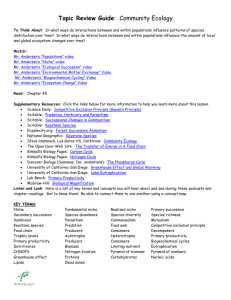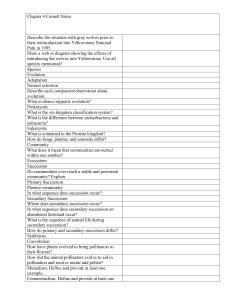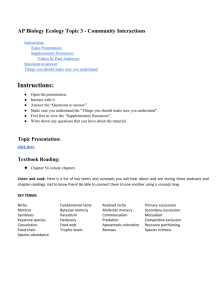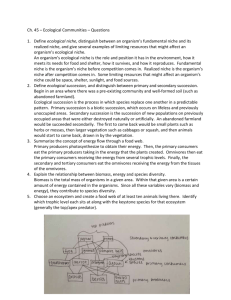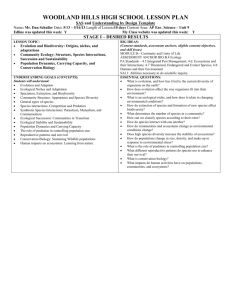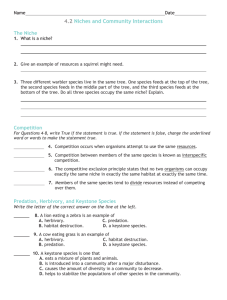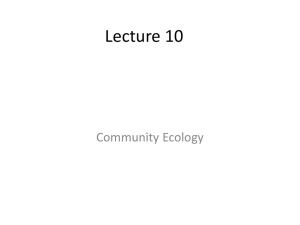TRG #3 Community Ecology
advertisement
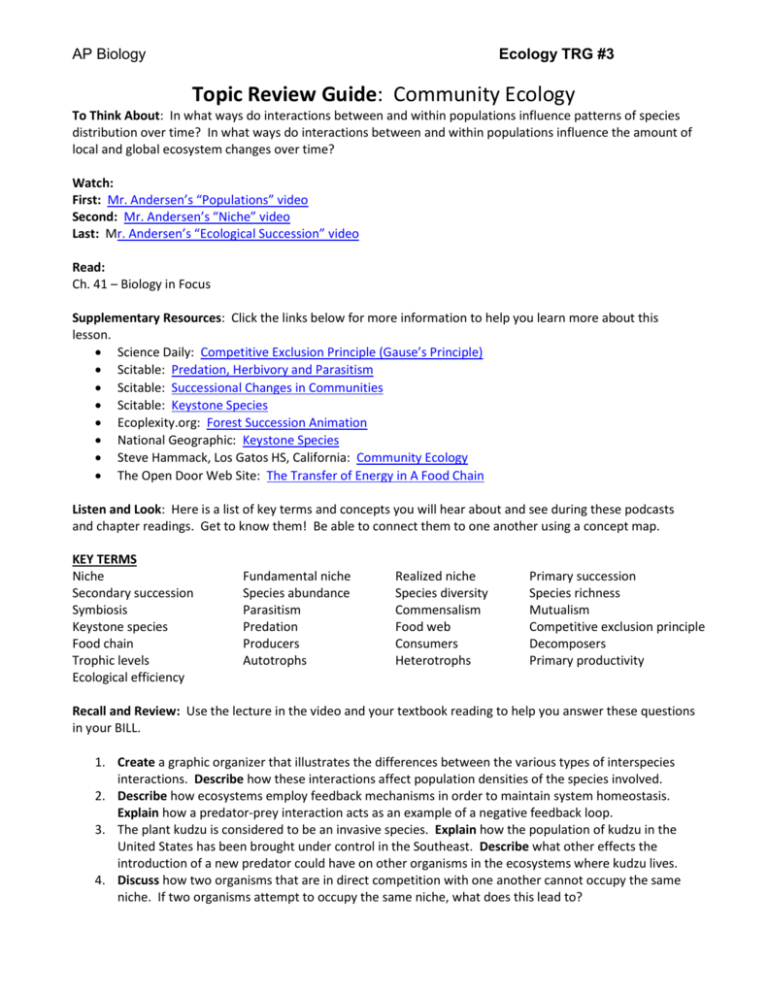
AP Biology Ecology TRG #3 Topic Review Guide: Community Ecology To Think About: In what ways do interactions between and within populations influence patterns of species distribution over time? In what ways do interactions between and within populations influence the amount of local and global ecosystem changes over time? Watch: First: Mr. Andersen’s “Populations” video Second: Mr. Andersen’s “Niche” video Last: Mr. Andersen’s “Ecological Succession” video Read: Ch. 41 – Biology in Focus Supplementary Resources: Click the links below for more information to help you learn more about this lesson. Science Daily: Competitive Exclusion Principle (Gause’s Principle) Scitable: Predation, Herbivory and Parasitism Scitable: Successional Changes in Communities Scitable: Keystone Species Ecoplexity.org: Forest Succession Animation National Geographic: Keystone Species Steve Hammack, Los Gatos HS, California: Community Ecology The Open Door Web Site: The Transfer of Energy in A Food Chain Listen and Look: Here is a list of key terms and concepts you will hear about and see during these podcasts and chapter readings. Get to know them! Be able to connect them to one another using a concept map. KEY TERMS Niche Secondary succession Symbiosis Keystone species Food chain Trophic levels Ecological efficiency Fundamental niche Species abundance Parasitism Predation Producers Autotrophs Realized niche Species diversity Commensalism Food web Consumers Heterotrophs Primary succession Species richness Mutualism Competitive exclusion principle Decomposers Primary productivity Recall and Review: Use the lecture in the video and your textbook reading to help you answer these questions in your BILL. 1. Create a graphic organizer that illustrates the differences between the various types of interspecies interactions. Describe how these interactions affect population densities of the species involved. 2. Describe how ecosystems employ feedback mechanisms in order to maintain system homeostasis. Explain how a predator-prey interaction acts as an example of a negative feedback loop. 3. The plant kudzu is considered to be an invasive species. Explain how the population of kudzu in the United States has been brought under control in the Southeast. Describe what other effects the introduction of a new predator could have on other organisms in the ecosystems where kudzu lives. 4. Discuss how two organisms that are in direct competition with one another cannot occupy the same niche. If two organisms attempt to occupy the same niche, what does this lead to? 5. The competitive exclusion principle states that two species cannot coexist in the same niche with all other ecological factors held constant. Describe a non-biological example of this principle. 6. Identify the source of energy for all ecosystems. Explain how each of the following trophic levels obtains energy from this source: a. Producers b. Primary consumers c. Secondary consumers d. Decomposers 7. Explain how and why energy is lost as it moves through ecological communities. How does this affect the length of food chains? 8. Using a graphic organizer, describe the similarities and differences between primary and secondary succession. 9. Label the food chains at right with the organism names and trophic level for each. 10. The producers in the terrestrial food chain (the one on the left in the diagram) obtain 5 x 106 kJ/m/yr of energy from the Sun. Using the 10% rule, how much energy do each of the following organisms get: a. The mouse b. The snake c. The hawk Learn More: For more examples of community ecology principles, use the links below: McGraw-Hill: Primary Succession Animation Greenriver Community College: Competitive Exclusion Animation McGraw-Hill: Niches for Wading Birds Prof. Danglais: Food Chain Reaction KevinFlint.org: Rainforest Food Chain

